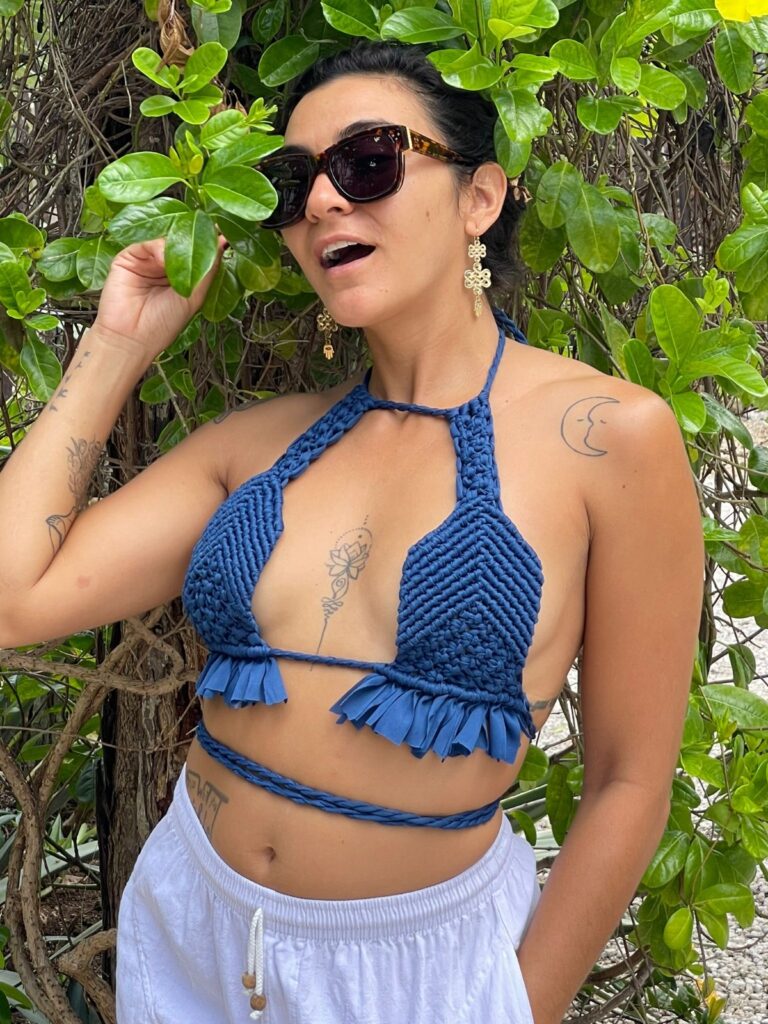MACRAME HISTORY

ANABEL – FASHION DESIGNER
In the beginning, our ancestors used knots to craft tools and weapons for hunting, as knotting is as old as civilization itself. Over time, this functional skill evolved, and Arab weavers were among the first to transform knots into a decorative art form known as macramé, turning practical techniques into intricate and beautiful designs.
Macramé is a form of textile craft that involves creating decorative patterns through knotting cords or threads by hand, without the use of needles or hooks. The technique typically uses materials like cotton, hemp, polyester, jute, or leather, forming intricate designs to create items like wall hangings, clothing, plant holders, and accessories.
The word “macramé” is derived from the Arabic word migramah, meaning “fringe” or “embroidered veil.” Sailors in the 17th century helped spread macramé to other parts of the world as they used the technique to make shipboard items like hammocks, belts, and nets, which they would sell or trade during their voyages.
Macramé also became popular in Europe during the Victorian era, where it was used for home decorations, including curtains, tablecloths, and bedspreads.
Importance of Preserving Macramé in Modern Times
Macramé is not only a beautiful and creative form of self-expression, but it also holds cultural significance. Preserving macramé as a craft:
Sustains Cultural Heritage: It connects us to the traditions and craftsmanship of ancient cultures, maintaining a link between past and present.
Encourages Mindful Crafting: In a world of mass-produced goods, macramé offers a slower, more mindful approach to creating, valuing patience and skill.
Eco-Friendly Craft: Since it often uses natural fibers and minimal tools, macramé aligns with sustainable and eco-conscious values.
Keeping macramé alive in modern times also nurtures creativity and provides a meaningful alternative to fast fashion, emphasizing quality, sustainability, and the value of handmade art.
